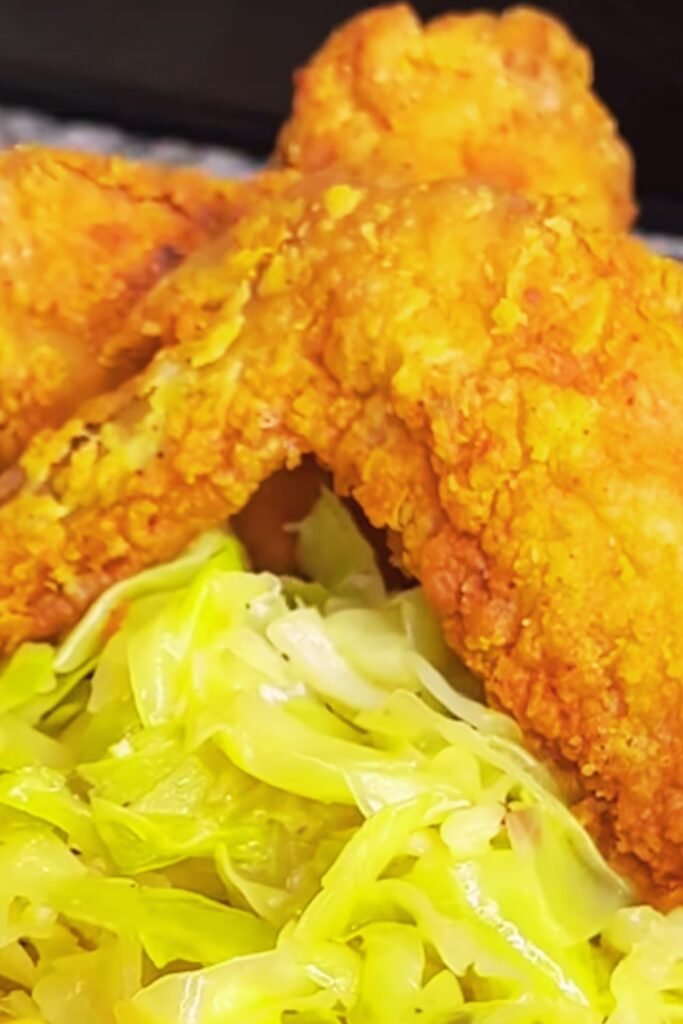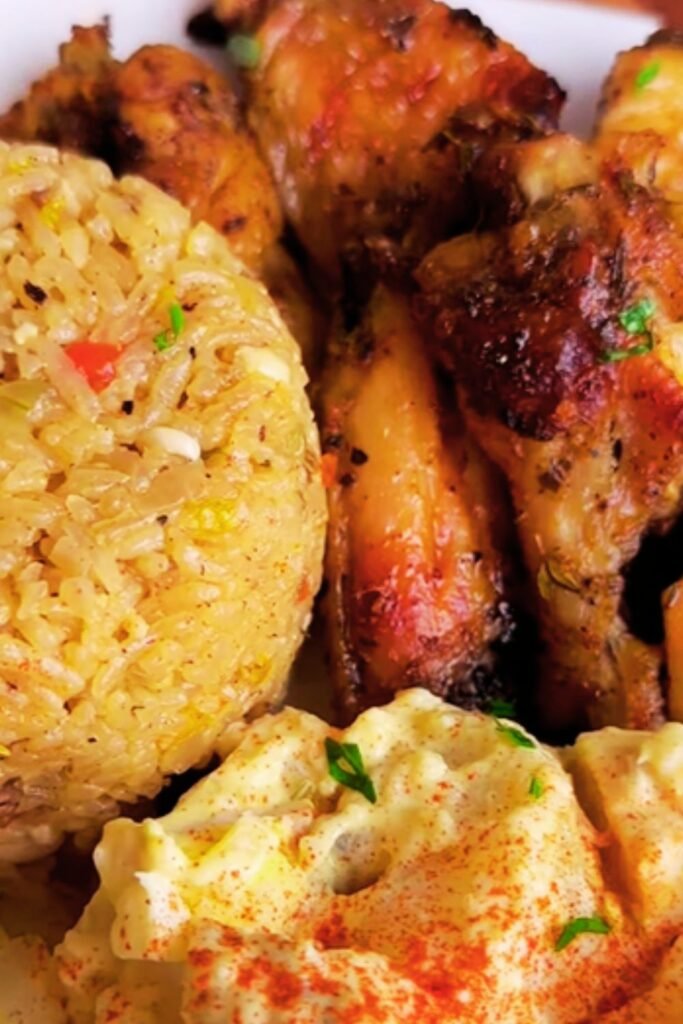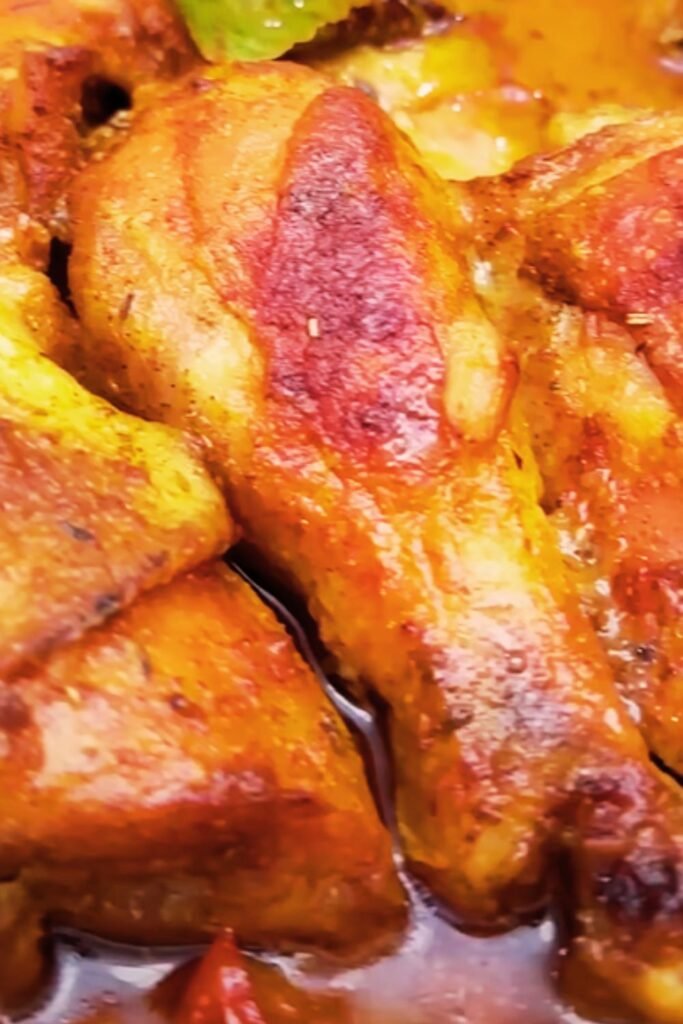When I think about soul food, my heart fills with warmth and my kitchen comes alive with the most incredible aromas. There’s something magical about these recipes that have been passed down through generations, carrying stories, love, and tradition in every single bite. Soul food isn’t just about feeding the body—it’s about nourishing the soul, bringing families together, and celebrating a rich culinary heritage that deserves to be honored and shared.
I’ve spent years perfecting these recipes, learning from grandmothers, aunties, and seasoned cooks who’ve generously shared their secrets with me. Each dish tells a story of resilience, creativity, and the incredible ability to transform simple ingredients into something absolutely extraordinary. From crispy fried chicken that makes your mouth water just thinking about it, to creamy mac and cheese that’s pure comfort in a bowl, these recipes represent the very best of Black American cuisine.
Understanding Soul Food: More Than Just Cooking
Soul food represents a culinary tradition born from necessity, creativity, and love. When I prepare these dishes, I’m not just following recipes—I’m participating in a cultural conversation that spans centuries. The techniques, seasonings, and combinations that define soul food emerged from the resourcefulness of enslaved Africans who transformed available ingredients into flavorful, satisfying meals.
Key Characteristics of Authentic Soul Food:
- Deep, complex flavors developed through slow cooking methods
- Creative use of every part of ingredients to minimize waste
- Heavy reliance on seasonings, particularly salt, pepper, and aromatic herbs
- Cooking techniques that maximize flavor while stretching ingredients
- Community-centered meal preparation and sharing traditions
Essential Soul Food Ingredients and Seasonings
| Ingredient Category | Essential Items | Flavor Profile | Usage Tips |
|---|---|---|---|
| Proteins | Chicken, pork (ribs, hocks, bacon), catfish, turkey | Rich, savory base flavors | Season generously, cook low and slow |
| Vegetables | Collard greens, okra, sweet potatoes, onions | Earthy, sweet, bitter balance | Fresh when possible, frozen acceptable |
| Seasonings | Garlic powder, onion powder, paprika, cayenne | Warm, aromatic, heat levels | Layer flavors throughout cooking |
| Pantry Staples | Cornmeal, flour, buttermilk, hot sauce | Binding, tang, heat | Quality matters for final results |
| Fats | Lard, bacon grease, vegetable oil | Flavor carriers, texture | Traditional fats enhance authenticity |
Classic Fried Chicken: The Crown Jewel
Nothing says soul food quite like perfectly fried chicken. My technique combines traditional methods with foolproof results that’ll have your family asking for seconds before they’ve finished their first piece.

Ingredients:
- 1 whole chicken (3-4 lbs), cut into pieces
- 2 cups buttermilk
- 2 cups all-purpose flour
- 2 tablespoons cornstarch
- 1 tablespoon garlic powder
- 1 tablespoon onion powder
- 2 teaspoons paprika
- 1 teaspoon cayenne pepper
- 2 teaspoons salt
- 1 teaspoon black pepper
- Vegetable oil for frying
My Step-by-Step Method:
- Marination Magic: I soak my chicken pieces in buttermilk for at least 4 hours, but overnight is even better. This tenderizes the meat and creates that signature tang.
- Seasoning Symphony: I mix all my dry ingredients in a large bowl, making sure every spice is evenly distributed. The cornstarch is my secret weapon for extra crispiness.
- Double Dredging: Each piece gets dredged in the seasoned flour, dipped back in buttermilk, then coated again. This creates layers that become incredibly crispy when fried.
- Temperature Control: I heat my oil to exactly 350°F and maintain it throughout cooking. Too hot, and the outside burns before the inside cooks. Too cool, and you get greasy chicken.
- Patience Pays: Dark meat takes 12-15 minutes, white meat 10-12 minutes. I never rush this process because perfect chicken is worth the wait.
Creamy Mac and Cheese: Ultimate Comfort
My mac and cheese recipe produces a dish so creamy and flavorful that it’s become legendary in my neighborhood. The secret lies in building layers of cheese flavor and achieving the perfect consistency.
Advanced Mac and Cheese Recipe:
| Component | Quantity | Purpose | Alternative Options |
|---|---|---|---|
| Elbow Macaroni | 1 pound | Base structure | Shells, cavatappi work well |
| Sharp Cheddar | 8 oz, shredded | Primary cheese flavor | Aged cheddar for intensity |
| Mild Cheddar | 8 oz, shredded | Smooth melting | Monterey Jack acceptable |
| Cream Cheese | 8 oz, softened | Creaminess factor | Full-fat only for best results |
| Heavy Cream | 1 cup | Rich liquid base | Half-and-half reduces richness |
| Butter | 4 tablespoons | Fat for roux | Real butter essential |
| Flour | 3 tablespoons | Thickening agent | All-purpose standard |
My Foolproof Technique:
I start by cooking my pasta just shy of al dente because it’ll continue cooking in the oven. While that’s happening, I create a roux with butter and flour, cooking out the raw flour taste for about 2 minutes. Slowly whisking in the cream prevents lumps from forming.
The cheese incorporation happens off the heat—I add it gradually, stirring constantly until each addition melts completely. The cream cheese goes in last, creating that ultra-smooth texture that makes this mac and cheese special.
For the topping, I mix breadcrumbs with a little melted butter and extra cheese. This creates a golden, crunchy contrast to the creamy interior that everyone fights over.
Southern-Style Collard Greens: Nutritious Soul
Collard greens represent the perfect marriage of nutrition and flavor in soul food cooking. My method transforms these sturdy leaves into silky, flavorful greens that complement any meal perfectly.

Essential Collard Green Components:
- 2 pounds fresh collard greens, stems removed, chopped
- 1 large smoked turkey leg or ham hock
- 1 large onion, diced
- 4 cloves garlic, minced
- 2 tablespoons apple cider vinegar
- 1 teaspoon red pepper flakes
- Salt and pepper to taste
- 6 cups chicken broth
My Collard Green Philosophy:
I believe great collard greens start with proper preparation. I wash each leaf individually, removing tough stems and chopping into bite-sized pieces. The smoking meat provides the foundation of flavor—I brown it first to develop those deep, savory notes.
Low and slow cooking is absolutely essential. I simmer my greens for at least 45 minutes, sometimes longer, until they reach that perfect tender consistency. The apple cider vinegar adds brightness that cuts through the richness, while the red pepper flakes provide just enough heat to keep things interesting.
Classic Cornbread: The Perfect Companion
No soul food meal is complete without cornbread, and my recipe produces golden, slightly sweet cornbread with the perfect crumb structure that holds up to gravy and soaks up all those delicious juices.
Premium Cornbread Ingredients:
| Dry Ingredients | Wet Ingredients | Special Additions |
|---|---|---|
| 1 cup yellow cornmeal | 1 cup buttermilk | 2 tbsp honey |
| 1 cup all-purpose flour | 2 large eggs | 1/4 cup melted butter |
| 1/4 cup sugar | 1/3 cup vegetable oil | 1 tsp vanilla extract |
| 1 tbsp baking powder | ||
| 1 tsp salt |
My Cornbread Success Strategy:
I preheat my cast iron skillet in the oven while mixing the batter. This creates that signature crispy crust that’s impossible to achieve any other way. The combination of cornmeal and flour gives perfect texture—not too dense, not too cake-like.
The buttermilk provides tang and tenderness, while the honey adds subtle sweetness without making it dessert-like. I never overmix the batter; a few lumps are perfectly fine and actually preferable to tough cornbread.
Smothered Pork Chops: Comfort in Every Bite
These pork chops swimming in rich, savory gravy represent everything I love about soul food cooking. The meat becomes incredibly tender while the gravy develops layers of flavor that’ll have you cleaning your plate with that cornbread.

Smothered Pork Chop Mastery:
I start with thick-cut pork chops, seasoned generously and dredged in seasoned flour. The browning process creates the foundation for the gravy—all those browned bits in the pan become liquid gold when deglazed.
My gravy technique involves building layers of flavor slowly. I sauté onions until they’re golden and caramelized, add garlic for aromatics, then whisk in flour to create the roux. The stock goes in gradually while whisking constantly to prevent lumps.
The pork chops simmer in this gravy for about 30 minutes, becoming fork-tender while the gravy thickens to perfect consistency. I finish with fresh herbs and adjust seasoning right before serving.
Sweet Potato Casserole: Holiday Perfection
My sweet potato casserole strikes the perfect balance between side dish and dessert, with creamy sweet potatoes topped with a crunchy pecan streusel that adds textural contrast and nutty richness.
Sweet Potato Casserole Components:
Base Layer:
- 3 pounds sweet potatoes, roasted until tender
- 1/2 cup butter, melted
- 2 large eggs
- 1/2 cup brown sugar
- 1/4 cup heavy cream
- 1 teaspoon vanilla extract
- 1/2 teaspoon cinnamon
- 1/4 teaspoon nutmeg
Pecan Topping:
- 1 cup chopped pecans
- 1/2 cup flour
- 1/2 cup brown sugar
- 1/4 cup cold butter, cubed
- 1/4 teaspoon salt
I roast my sweet potatoes whole until they’re completely tender, then scoop out the flesh while they’re still warm. This roasting process concentrates the natural sweetness and creates better flavor than boiling.
The topping comes together like a streusel, with cold butter creating those perfect crumbly bits that turn golden and crunchy in the oven. The pecans add richness and that essential textural contrast.
Candied Yams: Sweet Perfection
These aren’t actually yams—they’re sweet potatoes—but the name has stuck, and honestly, when they taste this good, I don’t argue with tradition. My candied yams achieve that perfect balance of sweet and spiced with a glossy finish that’s absolutely irresistible.
Candied Yam Excellence:
I slice my sweet potatoes into thick rounds, ensuring even cooking and beautiful presentation. The syrup combines butter, brown sugar, honey, and warm spices like cinnamon and nutmeg. A splash of vanilla and a pinch of salt enhance all the other flavors.
The cooking method involves layering the sweet potatoes in a baking dish, pouring the syrup over top, and baking until they’re tender and the syrup has thickened to a beautiful glaze. I baste them occasionally to ensure even coating and prevent drying out.
Soul Food Cooking Techniques and Tips
| Technique | Purpose | Application | Professional Tips |
|---|---|---|---|
| Low and Slow | Develops deep flavors | Braising, stewing, smoking | Patience creates perfection |
| Proper Seasoning | Builds flavor layers | Throughout cooking process | Season early, adjust late |
| Fat Rendering | Extracts maximum flavor | Bacon, salt pork preparation | Save rendered fats for later use |
| Cast Iron Cooking | Even heat distribution | Frying, baking, searing | Maintain seasoning for best results |
| Stock Building | Creates flavor foundations | Using bones, vegetables, herbs | Simmer gently, strain carefully |
Nutritional Considerations and Modern Adaptations
While traditional soul food can be heavy, I’ve learned to make modifications that preserve flavor while addressing modern health concerns. These aren’t about changing the essential character of the dishes—they’re about smart substitutions and techniques.
Smart Modifications I Use:
- Reduce sodium gradually: I use herbs and spices to maintain flavor intensity while cutting back on salt slowly over time.
- Incorporate more vegetables: Adding extra vegetables to traditional dishes increases nutrition without sacrificing taste.
- Choose leaner proteins sometimes: Turkey instead of pork in greens, or chicken thighs instead of wings for some dishes.
- Control portion sizes: Soul food is rich, so I serve reasonable portions alongside plenty of vegetables.
Meal Planning and Menu Combinations
Creating a soul food menu requires balancing flavors, textures, and richness levels. I plan my menus to include acidic elements that cut through richness, plenty of vegetables, and varied textures that keep every bite interesting.
Perfect Soul Food Menu Combinations:
Sunday Dinner Special:
- Fried chicken as the protein centerpiece
- Mac and cheese for indulgent comfort
- Collard greens for nutrition and balance
- Cornbread for soaking up juices
- Sweet tea or lemonade for refreshment
Holiday Feast:
- Smothered pork chops for rich, savory flavor
- Sweet potato casserole for festive sweetness
- Green beans with almonds for crunch
- Dinner rolls for bread variety
- Peach cobbler for dessert perfection
Storage and Reheating Guidelines
Soul food often tastes even better the next day, but proper storage and reheating techniques ensure food safety and optimal flavor retention.
My Storage and Reheating Method:
| Dish Type | Storage Method | Refrigerator Life | Reheating Instructions |
|---|---|---|---|
| Fried Chicken | Uncovered cooling, then wrapped | 3-4 days | Oven at 350°F for crispiness |
| Mac and Cheese | Covered containers | 4-5 days | Add milk, reheat slowly |
| Collard Greens | Airtight containers | 5-7 days | Stovetop with splash of broth |
| Cornbread | Wrapped in foil | 3-4 days | Toaster oven for best texture |
| Gravies and Sauces | Separate containers | 3-4 days | Whisk while reheating |
Frequently Asked Questions
Q: What makes soul food different from other Southern cooking styles?
Soul food specifically represents the culinary traditions developed by enslaved Africans and their descendants, incorporating African cooking techniques with available American ingredients. While Southern cuisine is broader and includes various cultural influences, soul food has distinct characteristics rooted in resourcefulness, community, and specific flavor profiles that emerged from this unique historical context.
Q: Can I make soul food healthier without losing the authentic taste?
Absolutely! I modify recipes by using turkey instead of pork in greens, baking instead of frying when possible, and incorporating more vegetables. The key is making gradual changes and understanding that the essential flavors come from proper seasoning and cooking techniques, not just from fat content. You can reduce unhealthy elements while maintaining the soul of the cuisine.
Q: What’s the most important skill for cooking great soul food?
Patience and seasoning skills are equally crucial. Soul food requires time to develop proper flavors—you can’t rush collard greens or achieve perfect fried chicken quickly. Learning to season throughout the cooking process, tasting and adjusting, and understanding how flavors build over time will transform your soul food cooking more than any single recipe.
Q: Why is cast iron cookware so important in soul food cooking?
Cast iron provides even heat distribution and retention that’s essential for proper browning, frying, and slow cooking. It also develops seasoning over time that adds subtle flavor to dishes. Many soul food techniques were developed using cast iron, so using it helps achieve authentic results. Plus, it can go from stovetop to oven seamlessly.
Q: How do I know when collard greens are properly cooked?
Properly cooked collard greens should be tender enough to cut with a fork but not mushy. They’ll have a silky texture and deep green color, and the cooking liquid will have reduced to a flavorful pot liquor. This usually takes 45 minutes to 1 hour of simmering, depending on the age and toughness of the greens.
Q: What’s the secret to crispy fried chicken that stays crispy?
The secret involves several factors: proper temperature control (350°F), double dredging for extra coating, not overcrowding the pan, and allowing proper drainage after frying. I also add a little cornstarch to my flour mixture for extra crispiness and make sure my chicken is properly dried before coating.
Q: Can I prepare soul food dishes ahead of time for entertaining?
Many soul food dishes actually improve with time! Collard greens, mac and cheese, and stewed dishes can be made a day ahead. Fried chicken is best served fresh, but other items reheat well. I prepare sides the day before and focus on proteins the day of serving for stress-free entertaining.
Q: What vegetables work best in soul food cooking?
Traditional soul food vegetables include collard greens, turnip greens, okra, sweet potatoes, black-eyed peas, and green beans. These vegetables were historically accessible and could be preserved or stored easily. They also pair beautifully with the rich, savory flavors typical in soul food proteins and seasonings.
These recipes represent more than just food—they’re connections to history, family, and tradition. Every time I prepare these dishes, I’m participating in a culinary conversation that spans generations. The techniques I’ve shared come from years of practice, learning from experienced cooks, and understanding that great soul food requires patience, love, and respect for the tradition.
When you cook these recipes, take your time, taste as you go, and don’t be afraid to adjust seasonings to match your family’s preferences. Soul food is meant to bring people together, create comfort, and celebrate the incredible creativity and resilience that birthed this amazing cuisine. I hope these recipes bring as much joy to your kitchen and table as they’ve brought to mine.